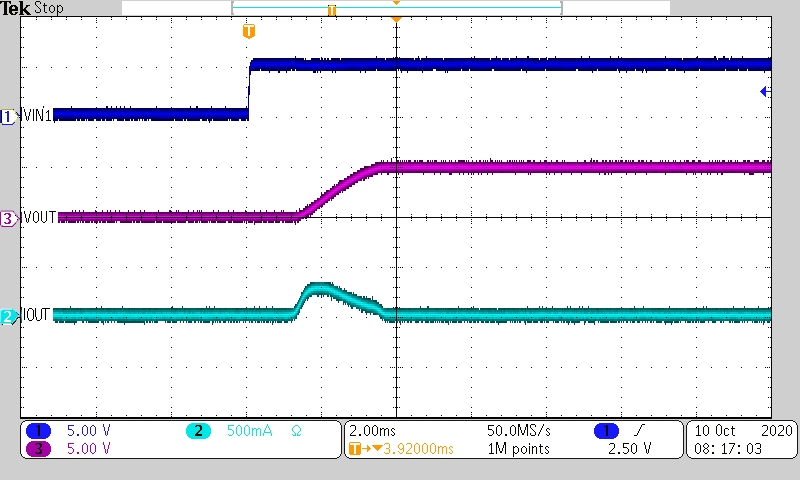SLVSG04 November 2021 LM66200
PRODUCTION DATA
8.2.3 Application Performance Plots
The below oscilloscope capture shows 5 V being applied to VIN1. The output comes up with slew rate control and limits the inrush current to below 500 mA.
 Figure 8-2 LM66200 Inrush Current Control
Figure 8-2 LM66200 Inrush Current Control